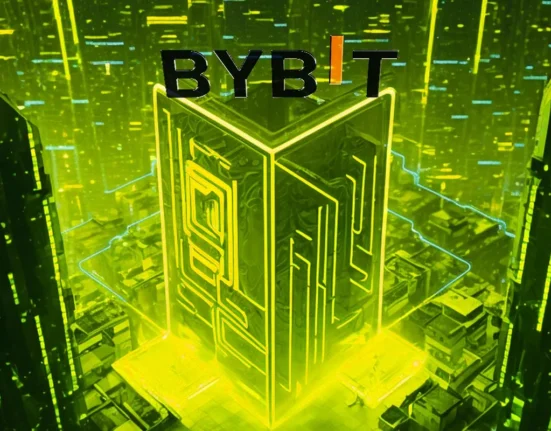The blockchain ecosystem is continuously evolving, and Polkadot has emerged as one of the most promising projects on the horizon. While established cryptocurrencies like Bitcoin and Ethereum dominate headlines, Polkadot is quietly carving out its space, attracting attention from both investors and developers. Top analysts predict that Polkadot (DOT) will experience an explosive 10X growth surge by 2025, positioning it as one of the top blockchain projects to watch in the coming years. This growth is expected to be driven by its unique technology, governance model, and expanding ecosystem.
Polkadot has captured the imagination of the blockchain community by solving some of the key problems facing traditional blockchain networks. Unlike conventional blockchains that operate in isolation, Polkadot’s multi-chain architecture allows multiple blockchains (known as parachains) to communicate and share information seamlessly. This interoperability is revolutionizing how blockchain projects can work together, enabling greater scalability, security, and flexibility for developers.
At its core, Polkadot offers an innovative approach to blockchain architecture. Unlike other projects, Polkadot doesn’t just focus on improving the scalability of a single blockchain; instead, it introduces a multi-chain network that enables interoperability between different blockchains. This vision of an interconnected blockchain ecosystem is gaining traction as developers and investors recognize its potential to drive mainstream adoption of decentralized applications (dApps).
Polkadot’s main innovation lies in its relay chain — the heart of its network, which connects multiple parachains (independent blockchains) that run parallel to each other. These parachains can be customized to suit different use cases, such as decentralized finance (DeFi), gaming, data storage, and more. The network’s interoperability ensures that these parachains can communicate and share information freely, creating a cohesive and collaborative ecosystem. This approach solves one of the most significant barriers to the scalability and adoption of blockchain technology.
The Key Features Driving Polkadot’s Growth in 2025
As the cryptocurrency market continues to mature, Polkadot is set to take center stage, offering a number of compelling reasons for analysts to predict its 10X growth in the near future. Let’s explore the key factors behind this explosive potential.
1. Interoperability: The Foundation of the Multi-Chain Ecosystem
Polkadot’s most significant advantage is its ability to interconnect multiple blockchains. Through its parachain model, Polkadot allows different blockchains to communicate and exchange data without relying on centralized intermediaries. This feature will be crucial for the evolution of cross-chain decentralized applications (dApps).
The ability to seamlessly connect and share information between independent blockchains is revolutionary in an industry where siloed networks have traditionally limited scalability and functionality. With Polkadot’s interoperability, cross-chain finance, data sharing, and decentralized governance are becoming a reality, paving the way for greater collaboration between projects and users across the blockchain ecosystem.
For developers, Polkadot presents an opportunity to create cross-chain solutions that integrate the best features of various blockchains. The ability to customize parachains for specific use cases will attract more projects to build on Polkadot, contributing to network growth and increasing its market value.
2. Scalability and Speed: Polkadot’s Solution to Blockchain Bottlenecks
One of the most significant challenges facing blockchain networks is scalability. While Ethereum and Bitcoin have become household names, their transaction processing abilities are often limited, leading to congestion and high transaction fees. Polkadot’s multi-chain structure addresses this issue by allowing multiple parachains to run simultaneously, each handling its transactions independently. This parallel processing architecture vastly improves transaction throughput and ensures the network can handle a higher volume of activity without bottlenecks.
With Polkadot, the network’s ability to process many transactions simultaneously results in significantly faster transaction finality, lower fees, and higher scalability. This scalability solution is ideal for decentralized applications (dApps) that require high-speed transactions and the ability to scale up as demand grows. Developers now have the tools to build decentralized applications that can handle thousands, even millions, of users, making Polkadot an ideal platform for the next generation of blockchain applications.
3. Innovative Governance: Decentralization and Flexibility
Polkadot introduces a unique governance model that enhances the network’s decentralization and security. Unlike traditional blockchain projects that require a hard fork to implement changes, Polkadot allows the community of stakeholders to vote on network upgrades and decisions in a decentralized and transparent manner.
This on-chain governance system allows Polkadot to evolve continuously without the need for contentious forks or conflicts. Polkadot’s flexible governance model ensures that the network remains adaptable to the changing needs of its users, developers, and investors. The network can quickly integrate improvements and upgrades through a collaborative decision-making process, which means it will not be left behind as blockchain technology continues to advance.
4. Parachain Auctions: A Unique Economic Model
Polkadot’s parachain auction system is another feature that sets it apart from other blockchain networks. Parachains are individual blockchains built on the Polkadot network, each with its specific purpose and functionality. In order to launch a parachain, developers must bid for a slot on the Polkadot relay chain through an auction process.
The auction mechanism introduces scarcity into the network, as there are a limited number of parachain slots available. This creates economic incentives for developers to create high-quality, innovative applications that add value to the network. Additionally, the crowdloan system allows token holders to contribute funds to projects they believe in, giving the community a chance to influence the future of the Polkadot ecosystem.
This economic model has already attracted significant investment, and as more projects vie for parachain slots, the demand for Polkadot’s native token, DOT, is expected to rise, contributing to its price appreciation.
5. Rapid Ecosystem Growth and Adoption
Polkadot’s ecosystem is growing rapidly, with dozens of high-quality projects already building on the network. Leading projects such as Acala, Moonbeam, Astar, and Phala Network are creating decentralized applications that cater to a wide range of industries, from DeFi to gaming to enterprise solutions. This growing ecosystem is creating a strong network effect, where each new project adds value and enhances the overall appeal of Polkadot.
Furthermore, Polkadot’s focus on interoperability has made it an attractive choice for projects built on other blockchain platforms, such as Ethereum and Bitcoin. By allowing these blockchains to communicate with Polkadot, the network has gained a foothold across multiple ecosystems, making it an attractive investment opportunity for both individuals and institutional investors.
The growing demand for decentralized solutions, combined with Polkadot’s innovative features, positions the network for massive growth in 2025. Here’s why analysts are predicting a 10X growth surge for Polkadot:
- Expansion of the Polkadot Ecosystem: As more developers and enterprises build on Polkadot, the network’s value and utility will grow exponentially.
- Increased Demand for Parachain Slots: The auction model ensures that developers will continue to compete for parachain slots, increasing the demand for DOT tokens.
- Continued Focus on Interoperability: As blockchain ecosystems continue to converge, Polkadot’s ability to connect different blockchains will drive its adoption in DeFi, NFTs, and enterprise applications.
- Strong Governance and Community Engagement: Polkadot’s decentralized decision-making process will keep the network adaptable to new trends, ensuring its long-term sustainability.
Polkadot’s unique features—its multi-chain architecture, governance system, and scalability—make it one of the most promising blockchain projects in the market. As the demand for decentralized applications continues to grow, Polkadot’s interoperability and ability to connect different blockchains will make it an essential platform for developers and investors. With the potential for 10X growth in 2025, Polkadot is set to become one of the most important players in the blockchain space.
Stay ahead of the curve by subscribing to Innovation Times. Get the latest news, expert analysis, and insights on Polkadot, blockchain technology, and the crypto market. Join the community of forward-thinking investors and stay informed about the trends that will shape the future of technology and blockchain.







Leave feedback about this